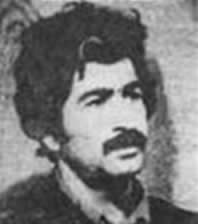The astute observer can see that the mass media in the West has not taken a strong, vocal, and unified stand as they are making today on Iranian elections on any topic since it uniformly marched to the drum of the necessity of eliminating “Sadam Housein’s Weapons of Mass Destruction” several years ago. The intention behind that action was to prepare Western public opinion for the war that was being planned. What is the intention behind Western Power’s manipulation of public opinion against Iran’s ruler’s today? What are their tactics and goals and what would they like to achieve?
There are certainly different opinions within the Western powers on what to do with Iran. A certain faction prefers Iran to be cut up into several small countries. In the video below you can see US congress woman Jane Harman say: “For one thing, the Persian population in Iran is not a majority, it is a plurality. There are many different diverse and disagreeing populations inside Iran. An obvious strategy, which I believe is a very good strategy, is to work to separate those populations.”
Yes, for Western powers it would be much easier to manage and handle several small states than a much larger, much more powerful Iran. The problem with this approach is the Iranian people’s intense sense of Nationalism. Someone correctly said that to understand Iranian sense of Nationalism you should take a Texan and add 4,000 years of history to them. This means that while there may be separatist movements in certain regions of Iran, a large number of Iranians will not easily allow a breakup of the country and will put up a strong fight against it. Unlike the Soviet Union, it would be difficult to break Iran into small states without fueling a long and bloody civil war. While certain players in the West may be happy with a civil war that will stop and push back Iran’s move towards being a regional power, I frankly don’t believe that the West can afford or would desire the instability along with the energy price fluctuations that it would entail.
The short term goals of the West are to destabilize the Ahmadinejad government and if possible over throw it. DebkaFile reports on how the ouster of Ahmadinejad was a top item of discussion in last week’s top level US Israeli meetings in Tel Aviv. It also outlines the 3 stages the US has outlined to deal with Ahmadinejad:
- Diplomatic Engagement – with diminished expectations of success.
- Increased harsh sanctions against Iran – including oil embargo and a naval blockade.
- Military action.
The uniform media coverage that we have seen has shifted public opinion in the world against the Ahmadinejad government to such an extent that many Westerners who were tiered of US military adventures in the world may now find options 2 and 3 justifiable at this time.

